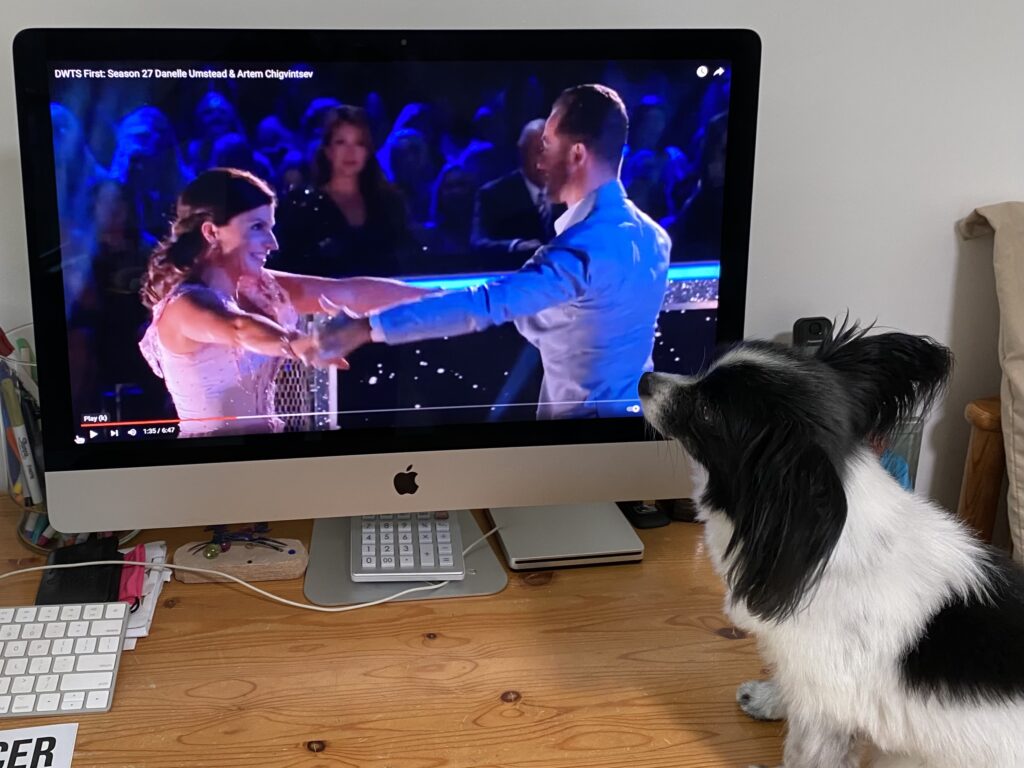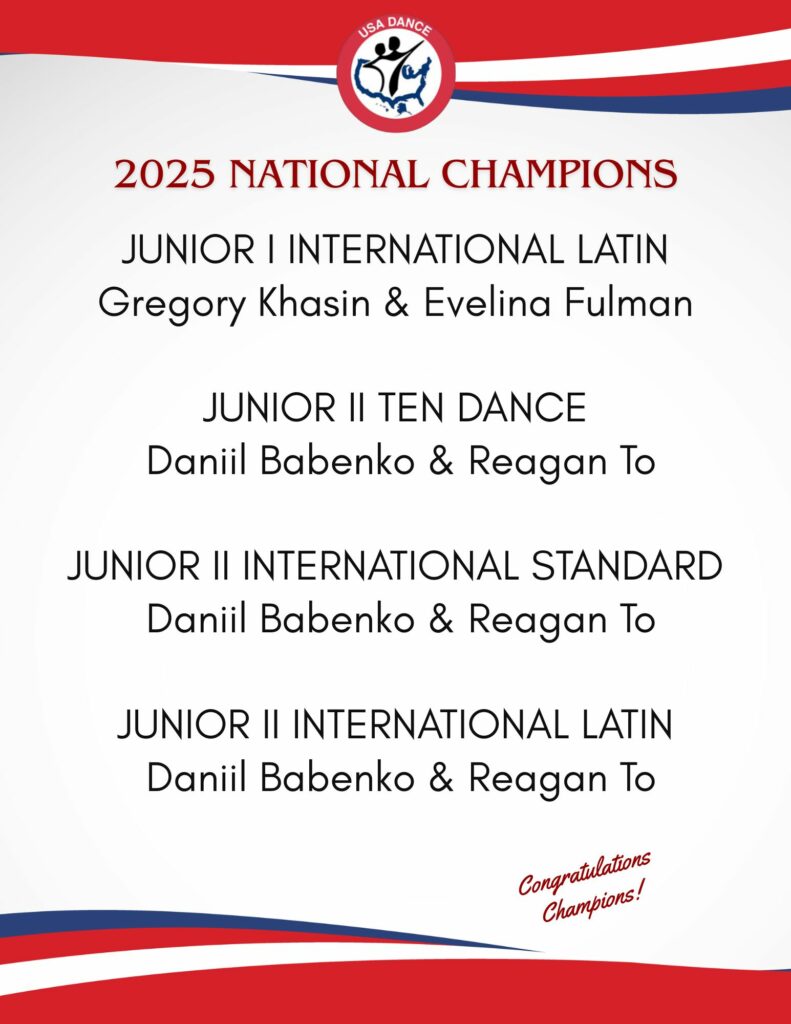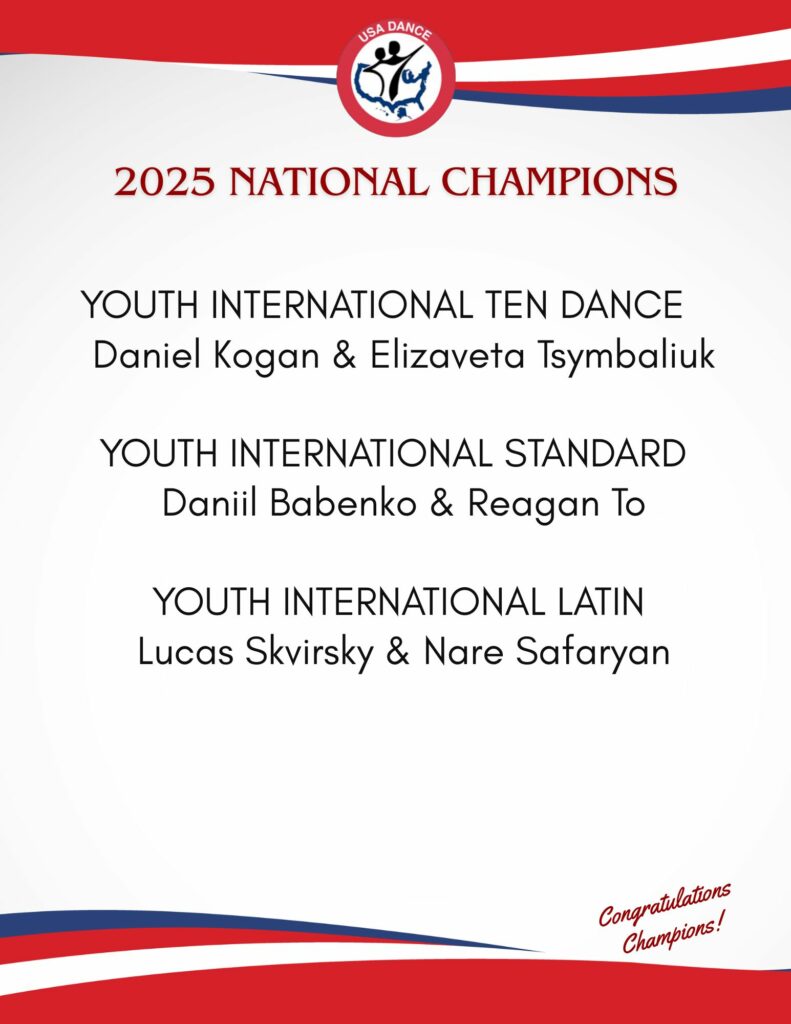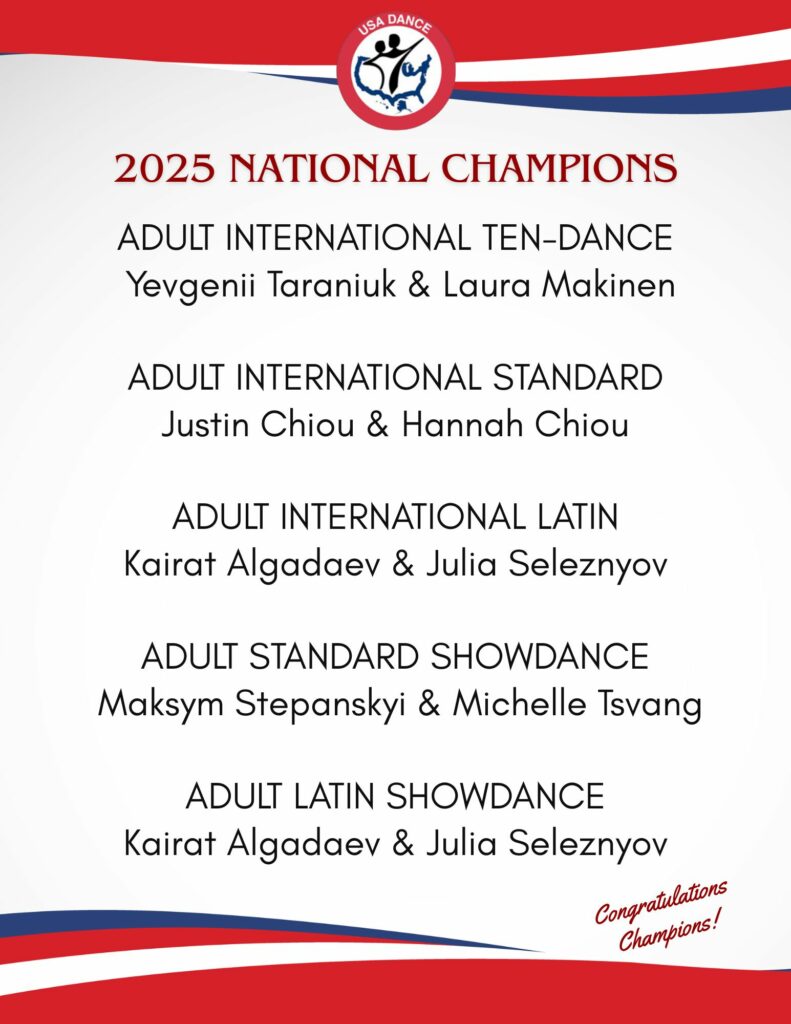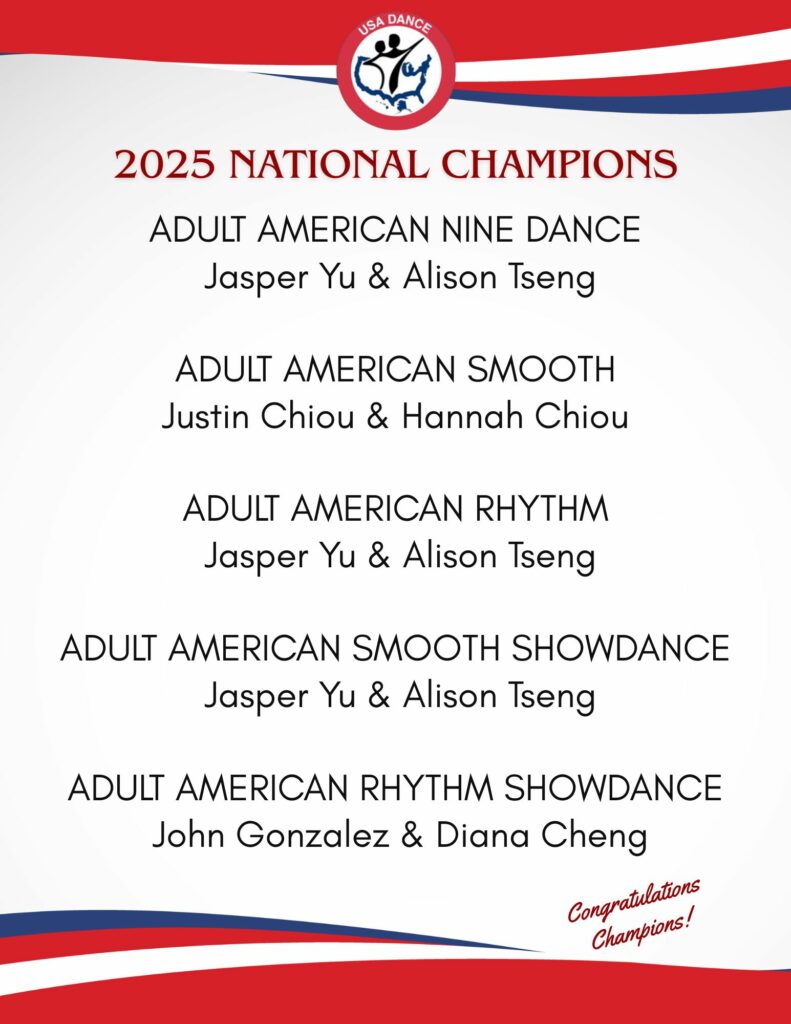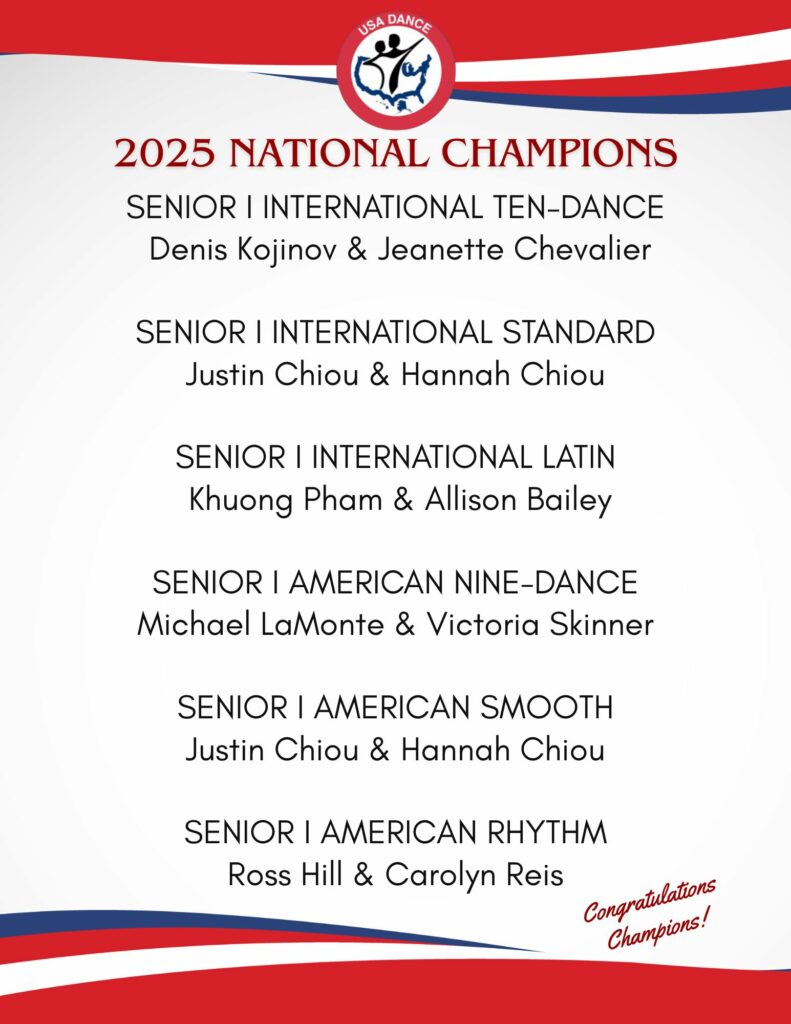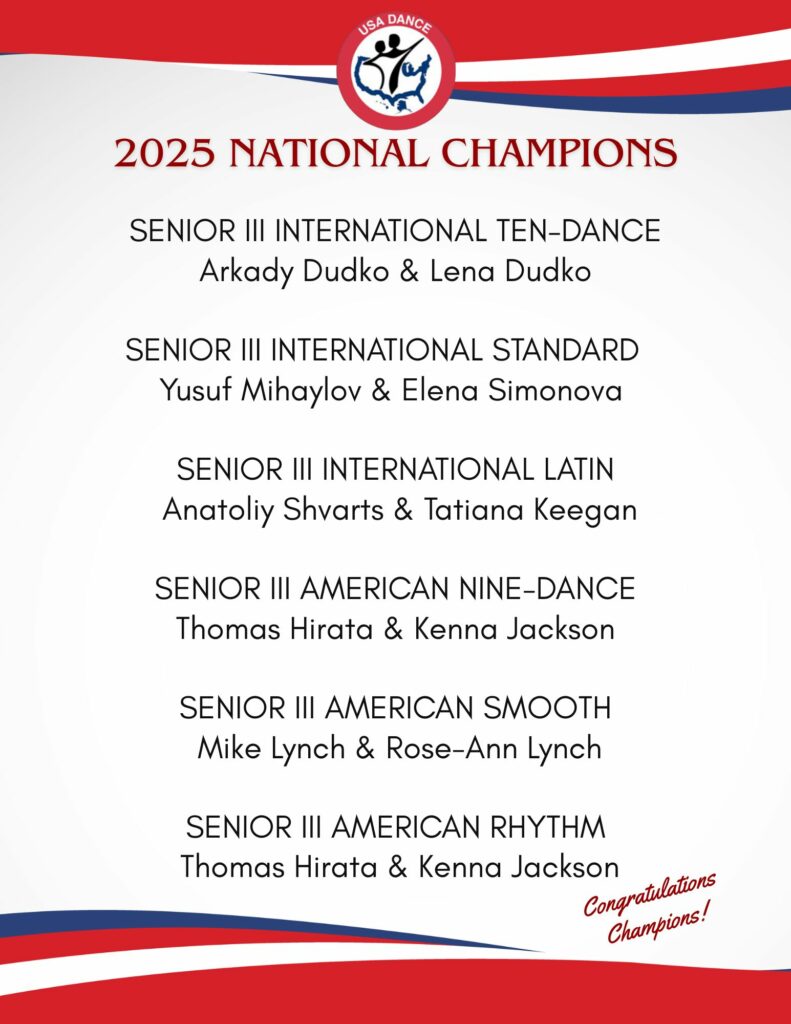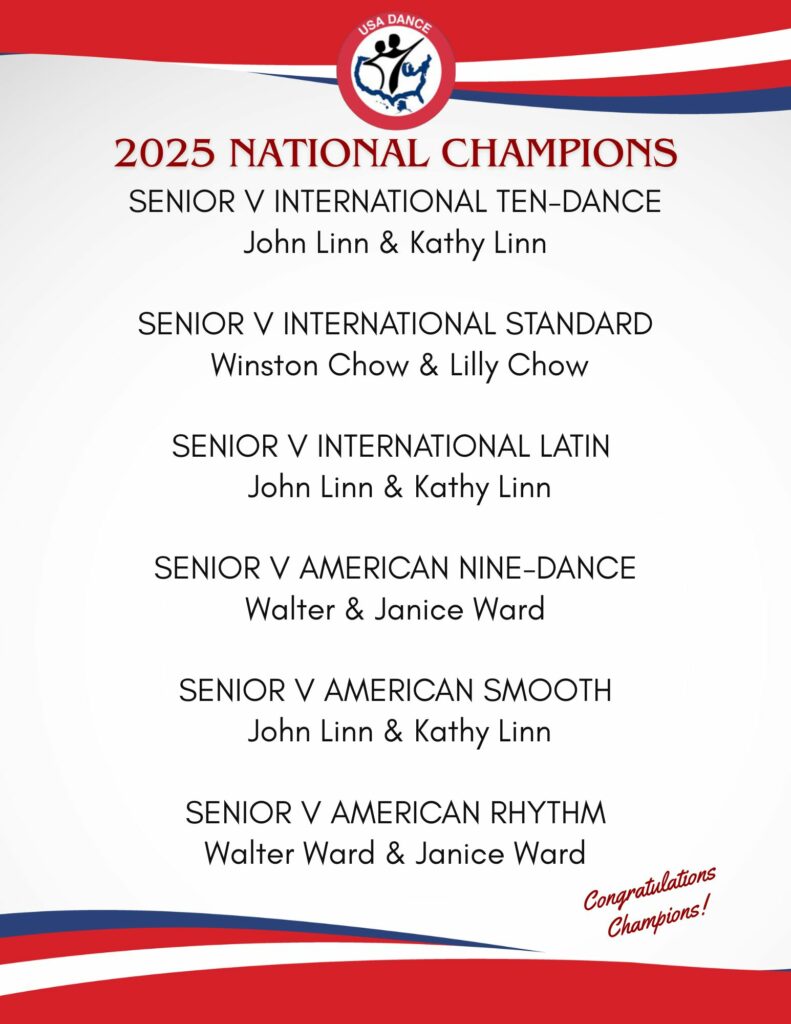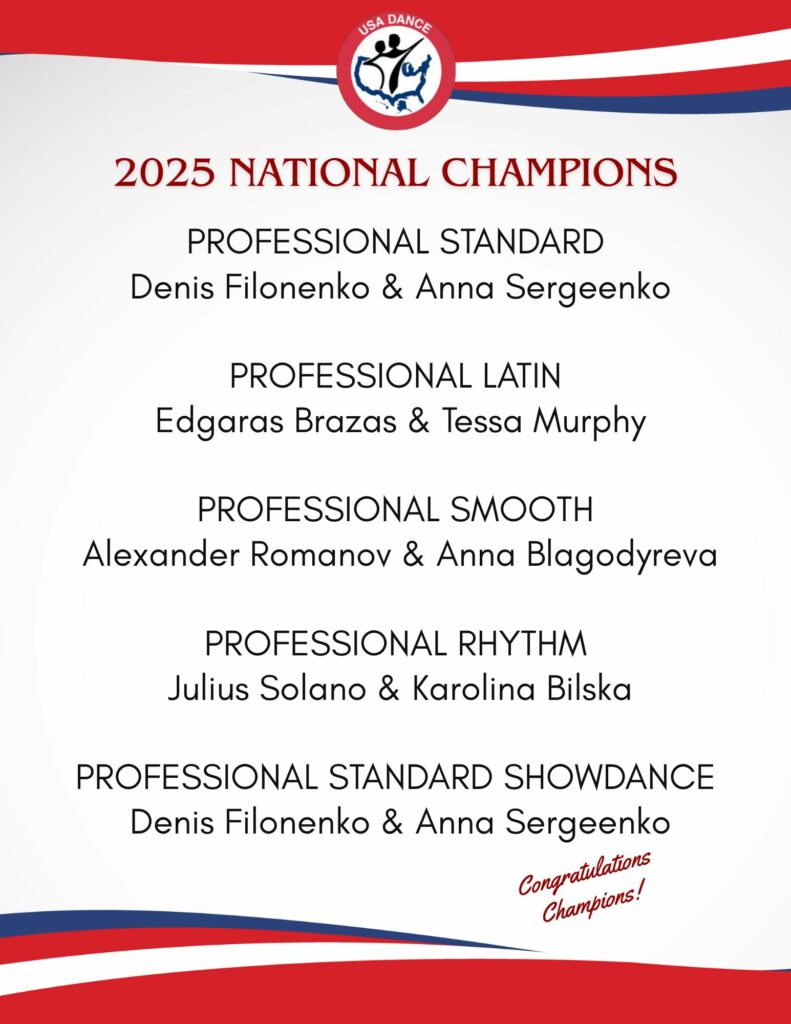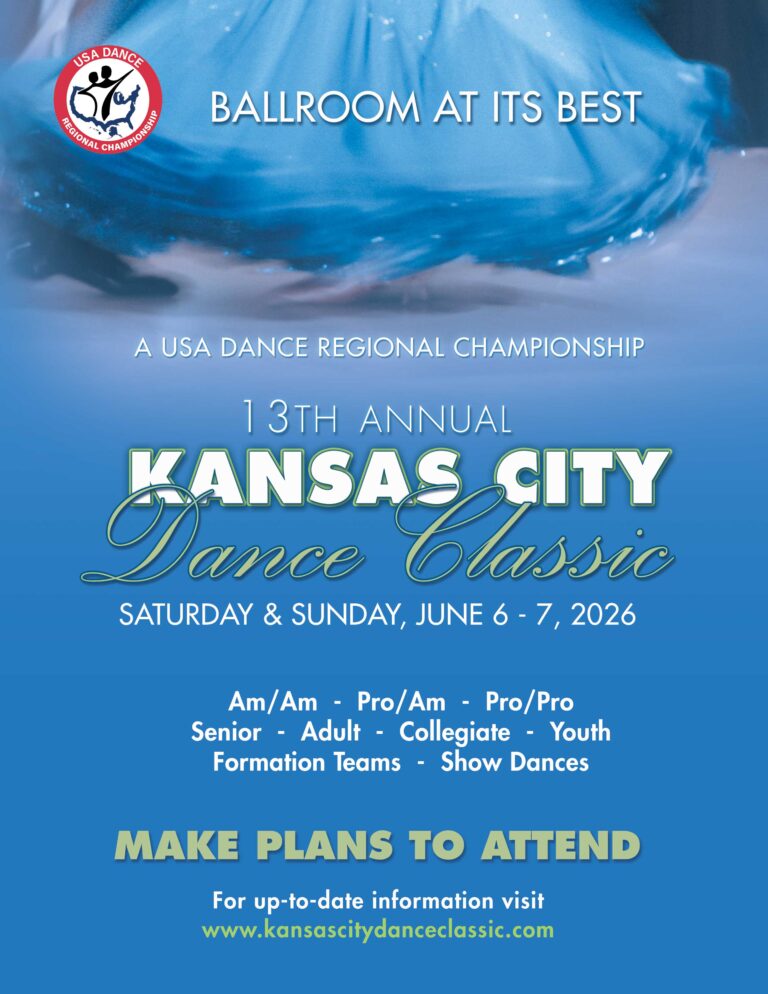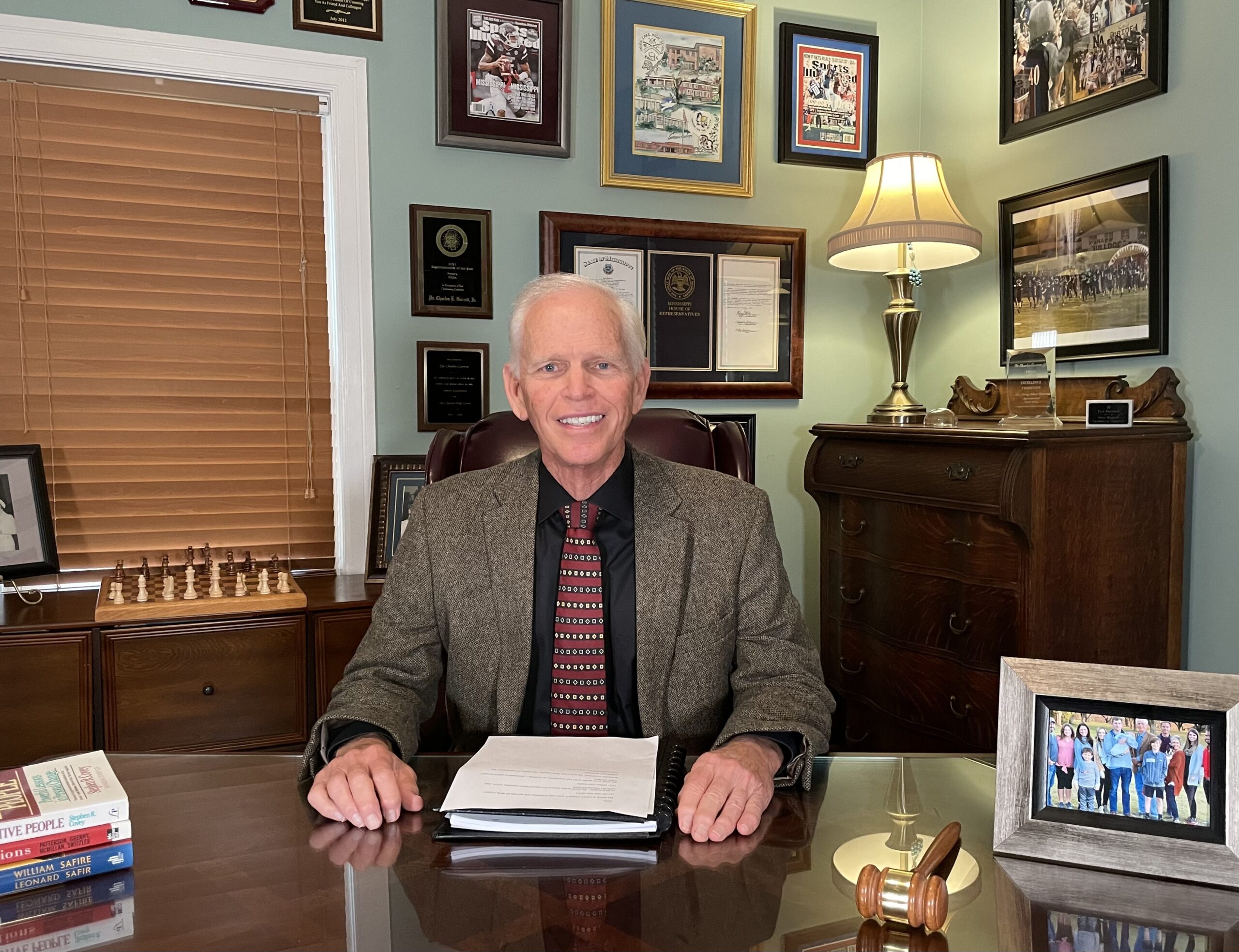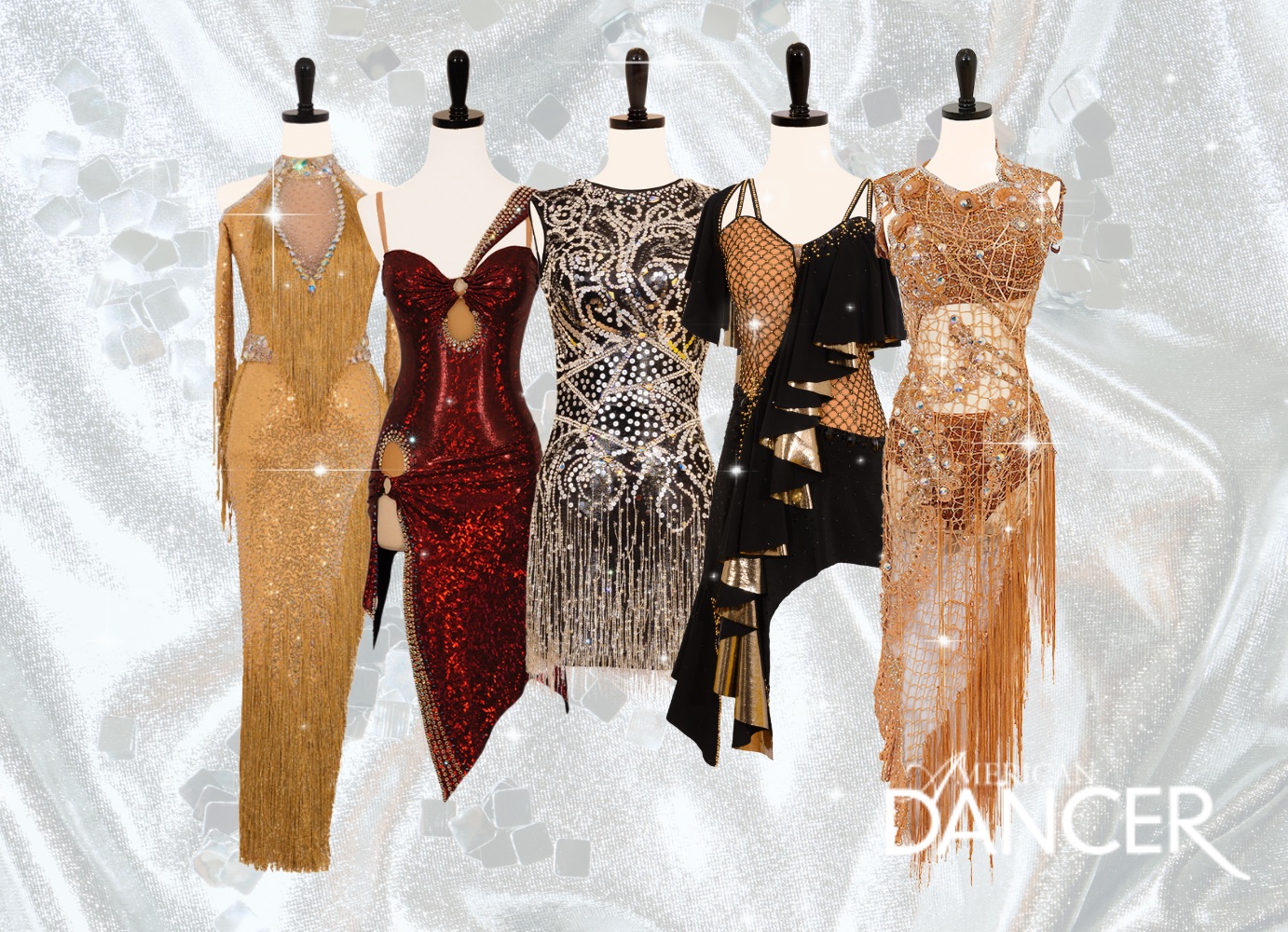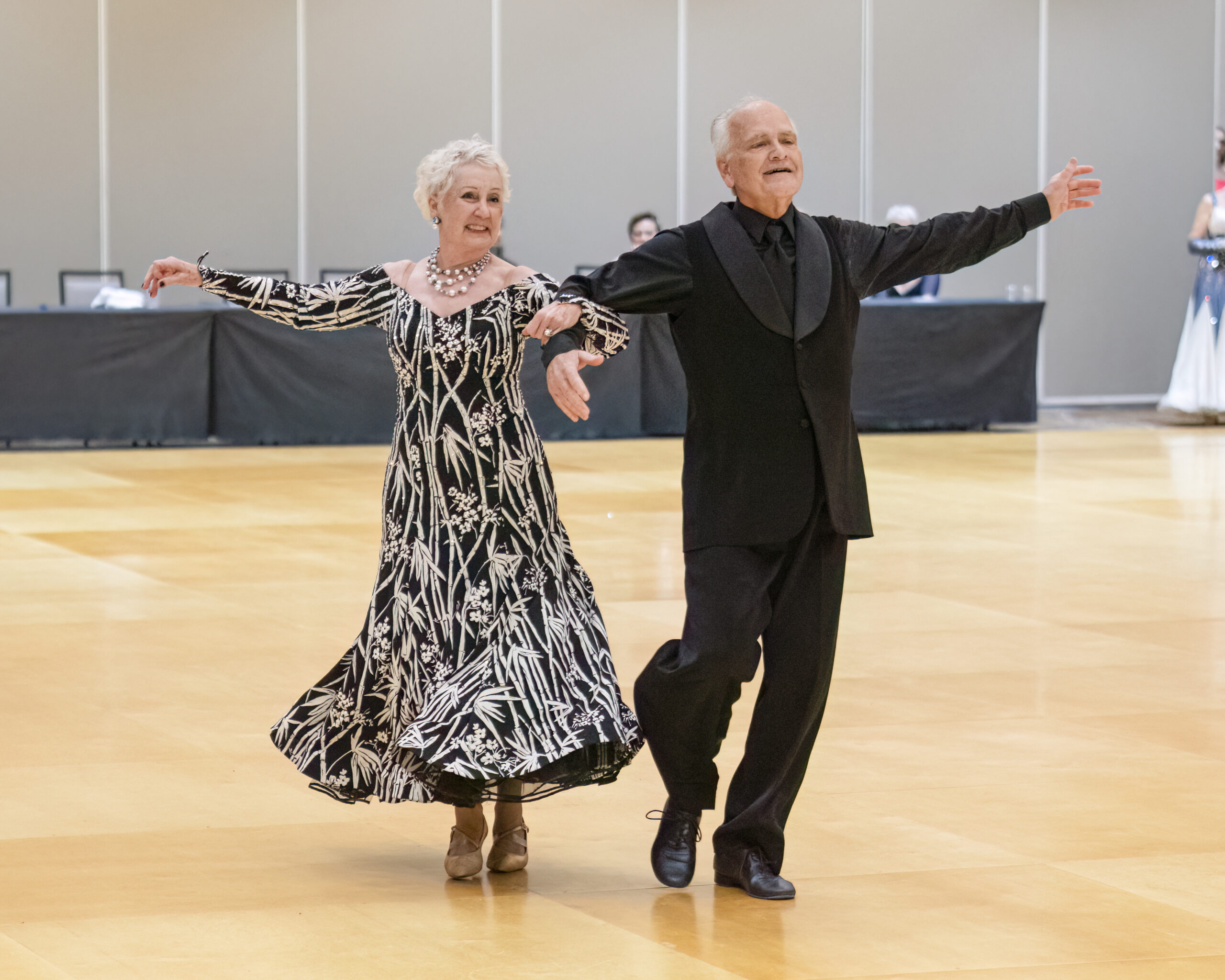In 2018, Danelle Umstead, a Paralympic Alpine Skier, took the stage as a contestant on “Dancing With The Stars”. Dancing alongside professional Artem Chigvintsev, she was an immediate crowd favorite as a lovely dancer and the show’s first-ever blind contestant. Recently, our own USA Dance Chapter #3012 started a program to bring dancing to the visually impaired. Here is their report:
Report: Dancing for those with visual impairment or who are blind
Dance Haddonfield — USA Dance Chapter Delaware Valley, Pennsylvania, #3012, working with the Haddonfield Lions Club, has initiated a program to bring ballroom dance to those with visual impairment or who are blind (“visually impaired”). We want to share with USA Dance and other chapters what we have learned and to offer to assist others in this means of bringing joy and a healthy pastime to the visually impaired.
Note: We have learned that the two terms – visual impairment and blind — are different, but we use the short form just for convenience here. For outreach purposes, however, both terms must be used to reach both groups.
Proof of concept
Dance Haddonfield started with a plan to conduct a “proof of concept.” We would run a 10-week program of ballroom dance lessons for the visually impaired and develop a model that others could use. The period selected was April 26 to June 28, 2023.
Having partners is key
We began by lining up partners in this program. Having partners is key to making this work. We started this jointly with the local Lions Club since the Lions are dedicated to issues related to vision.
We regularly run weekly Sunday evening dances at Haddonfield’s Grace Episcopal Church, which graciously allowed us to use their excellent floor space for free. Dance Haddonfield also brought in another non-profit, Ballroom Dancing for a Better U, founded by dance teacher Gene LaPierre. Gene, who has his own studio and also teaches dance at Rowan University, specializes in dancing for those with disabilities. He had experience in teaching ballroom dance to groups of visually impaired people.
Haddonfield Lions already had contact with a major employer of the visually impaired, Bestwork Industries for the Blind, in Cherry Hill, New Jersey. They actively assisted in recruiting potential dancers. With their support, we started with enough dancers to make the program worthwhile.
How the dance lesson program worked
The program was held on Wednesday evenings, with the lessons from 5:30 to 6:15 p.m.; we found this to be an appropriate amount of time for people who were new to ballroom dance. Bestwork Industries workers finished work by 4:30 p.m., so the timing matched their availability. Based on discussions at Bestwork Industries and their employees’ working hours, we concluded it was wise to include a meal before the dance. Since we already had an excellent provider, a local China King restaurant, we bought food from them and had it delivered each Wednesday.
We also elected to run this 10-week test for free. Neither the instructor nor the church charged us for the 10 weeks. We determined that for future purposes, however, it would be viable to charge $10 for each session. Without soliciting donations to fund this program, we received $1,700 in donations from three dancers who had heard about our program. This was entrusted to the Haddonfield Lions Club Foundation.
We concluded that the approach we tested does work. The visually impaired participants were introduced to several dances and learned steps in each of those dances. Most importantly they clearly enjoyed the experience, learned how to do some dances, and had a fun time. Seeing smiles on the faces of those who may never have thought this was possible was worth any bit of work that this takes.
Transportation was the biggest issue
We knew that transportation would be a key issue for the visually impaired. While we initially thought that recruiting visually impaired dancers would be a challenge, our alliance with Bestwork Industries made this part relatively easy.
However, we quickly discovered that coordinating drivers and dancers was a major challenge. We needed to know who was coming and who needed a ride. Initially, this was a very tense process, only knowing at the last minute whether we had the volunteer drivers we needed. Over time, however, we had enough drivers to handle all the contingencies (people being away, some dancers changing arrangements, etc.). However, anyone developing such a program should first determine what online system/app might help with coordination and who would be willing to take on this task. We initially considered trying to develop an arrangement with other transportation sources, such as Lyft or Uber. However, they did not respond to our inquiries, and the one time we tried this it did not work out.
Letting the dancers feel at home
Having the food was a definite plus. That meant that the dancers needed to arrive earlier so there was time to eat. It also involved finding out if there were food restrictions for the dancers. For the arrangements, we were very fortunate that one of our board members, Diane Liakos, took care of all the details necessary for everyone to enjoy the food. She also helped them to feel at home and made sure that each dancer felt comfortable.
Our first two dance lessons had 2-3 people which made it easier to develop our routines for the process, but by week eight, we had 10 dancers plus two sighted spouses. We typically had two experienced dancers onsite, which helped the instructor to interact with the dancers.
During this process, we learned much about the etiquette and practice of a program for the blind. This included:
- Meeting visually impaired participants upon their arrival at the dance location and offering them to hold an arm or elbow, while leading them slowly to and from their chair or lesson.
- Providing a safe environment and eliminating tripping hazards for all dancers, in order to reduce any risk of injury.
- Providing assistance to, from, and in the bathroom initially and as necessary.
- For some participants, providing door-to-door guidance when picked up or after being driven home.
- Offering assistance during meal/snack time with food and beverages.
Having visually impaired and sighted dancers
We learned that it was helpful to have the lessons not just for the blind, but also for the visually impaired. With a group of blind dancers, it is necessary to have people who can guide them — find the room where the dance is held, arrange/position their food and drink, and help with the restrooms. On the other hand, we believed that visually impaired people should not be given the sense that they could only dance with sighted people, so we did not try to match the visually impaired dancers with sighted dancers. The exception was Smooth or moving dances where a sighted partner would be necessary to avoid collisions. But for most of the dances, which were spot dances, the dancers each stayed in a relatively contained location and did not need visual guidance. In our lessons, we did not attempt moving dances.
What comes after the first lesson series
After June 28, the program will have a summer break and resume on September 13. The dancers will be welcome to participate in our regular summer Sunday night dances. Dance Haddonfield cannot guarantee transportation, but board members and volunteers will coordinate with and assist any visually impaired dancers who want to try this.
Future funding
Going forward, we plan to provide some compensation for the dance instructor, which will be paid to the nonprofit, Ballroom Dancing for a Better U. We also want to continue serving food and will consider funding sources.
Workshops for other dance instructors
We never want to turn away a blind person who asks about dance lessons, even when our class is full. Working with our instructor, Gene, we plan to offer a workshop for other dance instructors on how to teach ballroom dance to the visually impaired.
In a sense there are three components to teaching the visually impaired:
- How to teach dance to individual visually impaired people.
- How to teach dance to groups of visually impaired people.
- How to arrange and run a program for teaching dance to groups of visually impaired people.
We should note that there are dance instructors whose means of teaching is simply to demonstrate steps and have people watch and imitate. Obviously, for the blind, teaching must involve oral communication and touch. We learned from our program that this is a viable approach.
Outreach
Based on our proof of concept, we now plan to do outreach to other Lions Clubs and dance organizations to follow our approach, so that the joy of dancing becomes available to more people with impaired vision. Dance Haddonfield has contacts with most dance studios and organizations in the tri-state (Pennsylvania, New Jersey, and Delaware) area, and we are hoping that other Chapters within USA Dance share this interest. We anticipate the Haddonfield Lions Club networking with other Lions Clubs.
We would like to see the model we established be considered by others interested in helping the visually impaired to thrive, and to share the joy of ballroom dance with people who may not have considered it possible before.
Anyone interested in this outreach effort should contact: Joe Murphy Jemurphy5730@gmail.com.
Alpine skier, Danelle Umstead, did not win “Dancing With The Stars” Season #27. That year the mirror ball went to Bobby Bones dancing with professional Sharna Burgess. However, Danelle had her own victory and will not be forgotten by the dance world!!! Thank you Danelle and thank you to the hard-working and caring members of USA Dance Chapter #3012. YOU’VE TAKEN THAT STRONG HEEL LEAD!!

